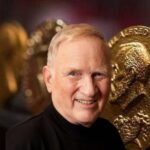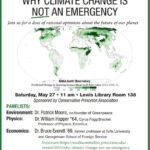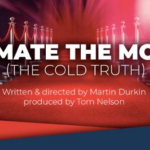On climategate.nl I have been writing about many subjects, so far in over a hundred blogs, but I hardly touched on climate science: the way radiation, convection and clouds determine our climate, and the ways to calculate the climate sensitivity of the forcings, i.c. CO2.
Of course this is an important subject, and I have spent a lot of my rare free moments trying to fathom the mechanisms of climate, mainly because it irritates me that there is so much talk about it, although nobodyhas been able to explain or prove anything. We are just supposed to believe the climate models.
I decided that I needed to really understand at least the principles of the greenhouse effect and the energy balance of the earth, in order to be able to assess the quality of the claims made by climate scientists.
Energy Balance
This energy balance was quite hard to make, because the physicists and climatologists I asked for information did not know how the basic radiation mechanisms worked. Finally, with the help of the late Dr Noor van Andel I have managed to get the basic physics right, and I was able to make a simple energy balance spreadsheet.
Still missing were the ratios that determine how much energy is radiated into space and how much is absorbed by the surface, from the energy that is emitted from the earth surface, the solar IR irradiation, and the latent heat after condensation. This was not easy to solve!
But I managed to construct a theory that made it possible to quantify these ratios, enabling me to finish my modelling.
I call it the Fireworks Theory.
The results appear to be astonishingly accurate, in the sense that they give really realistic values, close to what was measured in the atmosphere. I see this as evidence that the Fireworks theory could not be all wrong.
The Fireworks Theory
Though originally just meant for clarification and understanding climate, I started to realise that if my assumptions were correct, I had found a completely new and far more accurate way than the current methods to determine the radiation processes in the atmosphere.
I was working on this, when the ICCC7 announcement appeared, just a month ago. It seemed to me that I should not let go of this opportunity to discuss my findings with the most open minded climate scientists in the world; so I decided to write everything down in a website, trying to involve these experts, and give them time to prepare for a discussion of my findings in Chicago. It resulted in ten chapters, the first five about the theory, and the last five about my first thoughts on the convection and latent heat feedbacks to CO2 increase.
Climate Theory moderation
My climate website is called climatetheory.net and though it is a blog format like climategate.nl, I intend to run it in a different way. There is a moderation queue, and I will only allow reactions from scientists, and others invited to participate in the discussion, at least for the time being.
This topic on climategate.nl is open to unmoderated reactions regarding climatetheory.net.
Fireworks concept presentation at ICCC7
On Monday evening, after a long day of lectures, I was given a chance to introduce the Fireworks concept to a few highly respected climate sientists, four of which were conference speakers. It was probably not my personal reputation, but rather my affiliation with Marcel Crok, that sufficed to be granted this great favour!
Attendands: Prof. Dr Tom Segalstad (Univ. of Oslo), Prof. Dr Larry Gould (Univ. of Hartford), Prof Dr Fred Singer (NIPCC), Prof. Dr Sebastian Lüning ( co-author of Die Kalte Sonne, RWE), Dr Thomas P. Sheahen (Western Technology) and Prof. Dr Jeffrey Foss (Univ. of Victoria BC)
Not on the picture: John Kehr (author of The Inconvenient Sceptic)
Because it had been a very tiring day, I tried to be brief and to the point, concentrating on the Fireworks simulation. But my calculation of the emission of latent heat of the Hadley Cell to space, based on the simulation, certainly met with a lot of interest too.
Most of the attendants did not see radiation theory as their core competence, and had not been able to have a good look at the site in preparation, so they were careful in formulating their reaction. But in general my feeling was that the theory was considered to be promising. 
A “special appearance” was made by John Kehr, who as an outsider has figured out how the atmosphere works, comparable with my efforts, though definitely more thoroughly so. However, he framed it in a completely different way. I intend to read his book The Inconvenient Sceptic and see if the two concepts can be combined.
I am very grateful for the opportunity given to me to present my thoughts, and I would like to thank those present for their interest and valuable reactions and advice.








@ Theo, ik hoop dat je ook tijd blijft vinden te bloggen voor climategate.nl, met dank voor wat je reeds hebt betekend!
Overigens veel succes gewenst met je eigen website http://www.climatetheory.net/ (een prima initiatief, een leemte opvullend, zo lijkt mij) en met het bereiken van wat je er van verwacht!
@Turris
Het meeste werk aan de vuurwerktheorie is gedaan in 2010, en de website is in ijltempo gemaakt in de drie weken vóór ICCC7. Ik heb helaas sinds vorige zomer amper nog tijd voor onderzoek omdat ik weer méér dan full-time nodig ben op mijn bedrijf.
Verder denk ik niet dat de site veel aandacht zal vragen:
De specialisten op stralingsgebied zijn niet echt gemotiveerd om er tijd in te stoppen: óf het is onzin, óf het gooit alles over hoop waar ze hun hele carrière op gebouwd hebben. Met die instelling haken ze al snel af omdat er veel in mijn theorie staat dat in strijd lijkt met wat ze geleerd hebben.
De klimaatexperts die er wat neutraler in staan, zien er wel de verdienste van (zoals de heren bij de presentatie) maar durven zich niet uit te spreken omdat het hun vakgebied niet is.
Toch hoop ik dat er een klimatoloog de moeite neemt om mee te helpen de aannames te verbeteren, zodat de uitkomsten wel "substance" krijgen.
Of om aan te tonen dat het allemaal onzin is natuurlijk…
Ik vermoed dat Em. prof. Arthur Rörsch c.s. er zeker een plekje op vinden voor hun theoretische betogen.
Daarmee wordt climategate.nl indirect meer een "varia" site over klimaatpolitiek?
Theo, ik zal de website met veel interesse gaan lezen en bestuderen.
Wat ik zo opmaak is dat je een ingenieursbenadering hebt gekozen voor dit probleem. Er zijn vele voorbeelden in de techniek, waar is gebleken dat dit een goede aanpak is. Een ingenieur, die iets moet maken, kan vaak niet anders dan die ingenieursbenadering kiezen, m.a.w. hij kan niet wachten tot ie de perfecte (zeer gedetailleerde) theorie heeft. Als de benadering goed genoeg is om het probleem op te lossen is dat vaak voldoende.
Misschien toch wel handig om de afkorting ICCC7 eenmaal aan te duiden met de volledige naam: International Conference on Climate Change georganiseerd voor de zevende maal door het Heartland Institute. Een conferentie dat door climate sceptics wordt gedomineerd maar waar wel alarmisten voor worden uitgenodigd die, op een enkeling na, het mijden als de pest.
@ Chris: http://www.climatetheory.net/ is een lege website en wordt ook gemeden als de pest.